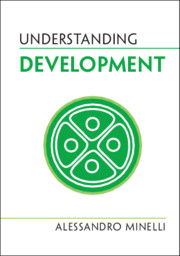Book contents
- Understanding Development
- Series page
- Understanding Development
- Copyright page
- Reviews
- Dedication
- Contents
- Foreword
- Preface
- Acknowledgements
- 1 Defining Development, if Possible
- 2 Cells and Development
- 3 Development as the History of the Individual
- 4 Revisiting the Embryo
- 5 Developmental Sequences: Sustainability versus Adaptation
- 6 Genes and Development
- 7 Emerging Form
- 8 The Ecology of Development
- Concluding Remarks
- Summary of Common Misunderstandings
- Classification
- References and Further Reading
- Index
7 - Emerging Form
Published online by Cambridge University Press: 29 April 2021
- Understanding Development
- Series page
- Understanding Development
- Copyright page
- Reviews
- Dedication
- Contents
- Foreword
- Preface
- Acknowledgements
- 1 Defining Development, if Possible
- 2 Cells and Development
- 3 Development as the History of the Individual
- 4 Revisiting the Embryo
- 5 Developmental Sequences: Sustainability versus Adaptation
- 6 Genes and Development
- 7 Emerging Form
- 8 The Ecology of Development
- Concluding Remarks
- Summary of Common Misunderstandings
- Classification
- References and Further Reading
- Index
Summary
Regular patterns are common in living organisms. Examples are the radial symmetry of many flowers, the bilateral symmetry of most animals, the repetition of vertebrae or the branching of vascular systems. In principle, these regular patterns only require the repetition of one elementary module. There is no separate genetic control for each vertebra or body segment, or for left vs. right eyes. Deviation from symmetry, or from precise repetition of identical parts, may require specific control, as in the right- vs. left-handedness of gastropod shells, but what is controlled is deviation from symmetry, rather than polarity of handedness; therefore, flipping between directions can be easy. Repetition of a pattern at different scale produces fractal shapes of which there are a number in living nature. However, targeted investigation is required to confirm if a given symmetric or fractal pattern is produced in the mathematically simplest way, a prediction sometimes contradicted by facts. Genes are involved in specification of positions along the main body axis of animals, but the genome does not contain any specification of the linear paths along which nerve axons or fungal hyphae grow.
Keywords
- Type
- Chapter
- Information
- Understanding Development , pp. 113 - 134Publisher: Cambridge University PressPrint publication year: 2021



